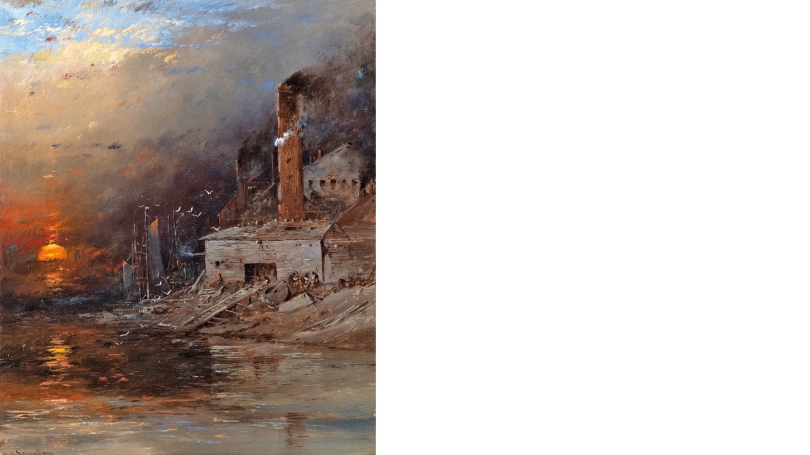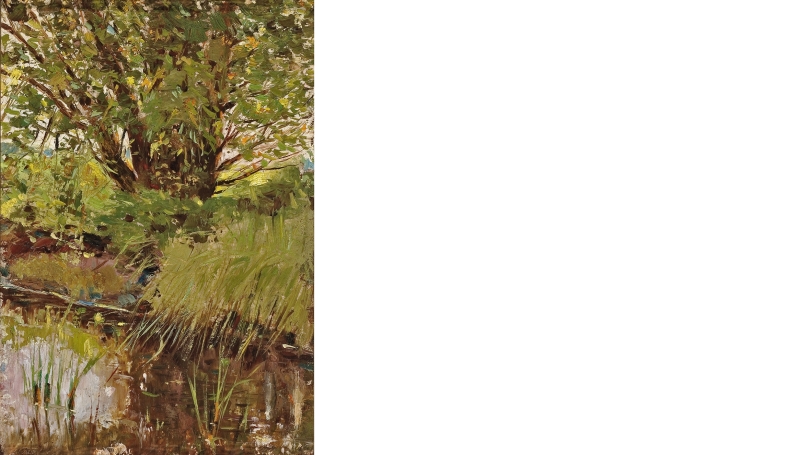MICHAEL HARTMAN, Jonathan Little Cohen Associate Curator of American Art
Hood Quarterly, spring 2022
In William Louis Sonntag's Boat Yard on the East River, the factories and smokestacks looming above New York's waterways replace the mountains and lakes of the natural world. Presented in a vertical format, Sonntag's industrial scene upends our expectations of nineteenth-century American landscapes to highlight the environmental impact of rapid industrialization. The sun's orange reflections, muted by an overcast and polluted sky, imbue Sonntag's scene with a sense of romanticism, reflecting his early training in the Hudson River School tradition. However, Sonntag's looser brushwork and focus on light and atmospheric effects are borrowed from the latest French Impressionist and Barbizon styles.
Sonntag began his career in 1850s Cincinnati, where he developed a close friendship with African American painter Robert Duncanson. The two artists had studios next to each other and even sailed together for a Grand Tour of Europe in 1853. While Duncanson would return and make a career in Cincinnati, Sonntag relocated to New York City and began experimenting with the atmospheric possibilities of industrialized cityscapes. Given its modest size—measuring roughly 12 × 10 inches—Sonntag's Boat Yard may have been painted on the spot. He lived just a few blocks away from the East River on East Twenty-Second Street.
Working further west, James Bolivar Needham became known for his Chicago River scenes at the end of the nineteenth century. Heavily layered and quickly applied paint in his Untitled (River Landscape near Chicago) suggests that Needham painted from life, as does the painting's small size at just 12 × 8 inches. He also inscribed the date, September 3, 1898, on the back of the canvas. On this day, weather forecasters reported cloud-covered skies and temperatures topping 92 degrees. The heat suggests why Needham, unlike Sonntag, sought respite away from one of Chicago's notoriously smelly and polluted waterways.
Born on the Canadian side of Lake Erie, Needham began working on merchant ships in the Great Lakes as a teenager, an occupation that eventually brought him to Chicago. He was one of the earliest-known Black artists working in the city and became renowned for his river paintings. Needham exhibited throughout the 1890s, and reporters lauded his ability to find beauty "in the mud" of Chicago's rivers. Amid increasing industrialization at the end of the nineteenth century, both Needham and Sonntag embraced modernist styles to portray rapidly changing cityscapes—whether a tree growing in the mud or an eerily beautiful smoky haze.

